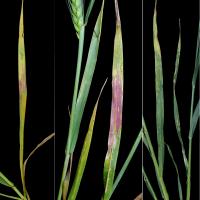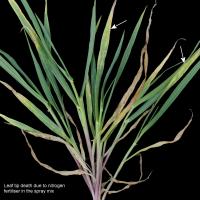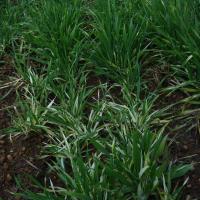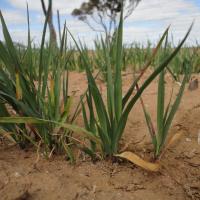| Chemical name | Example trade name |
|---|---|
| Group F - Nicotinanalides | |
| Diflufenican | Brodal® |
| Tigrex® (with MCPA) | |
| Jaguar® (with bromoxynil) | |
| Picolinofen | Paragon® |
| Sniper® | |
Symptoms appear within 3 to 4 days of application (2 days in sunny weather)








